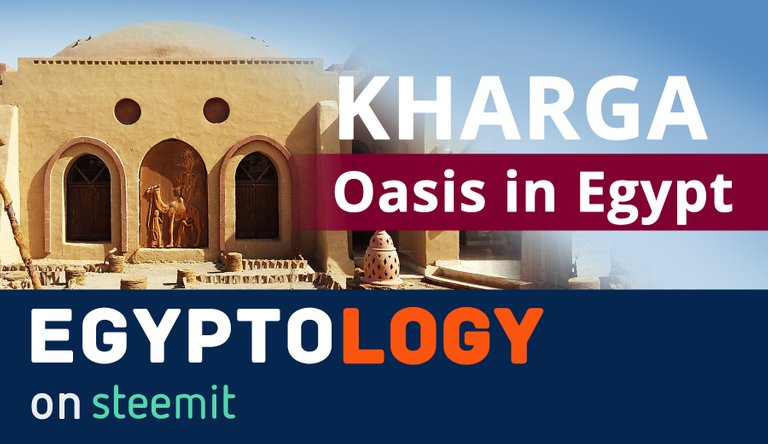
It has been again a few days since I wrote my last article. Apologies for that. Now I am back in Germany and will review all my notes and pictures I took and in this post, I want to give you the promised information about the second oasis of my journey: Kharga Oasis – a wonderful place to dive into Greco-roman and Persian period of Ancient Egypt. Follow me if you like to know more about unique places in Ancient Egypt that cover hidden and long forgotten monuments of the pharaonic period – and that you probably never heard of before.
Kharga Oasis
Kharga is another huge oasis in the western desert of Egypt (Libyan Desert), located between Assiut and Dakhla (see map below). It is the capital of the New Valley District (Al Wadi Al Gadid) and can easily be reached by bus from Cairo in the north or Luxor in the south.
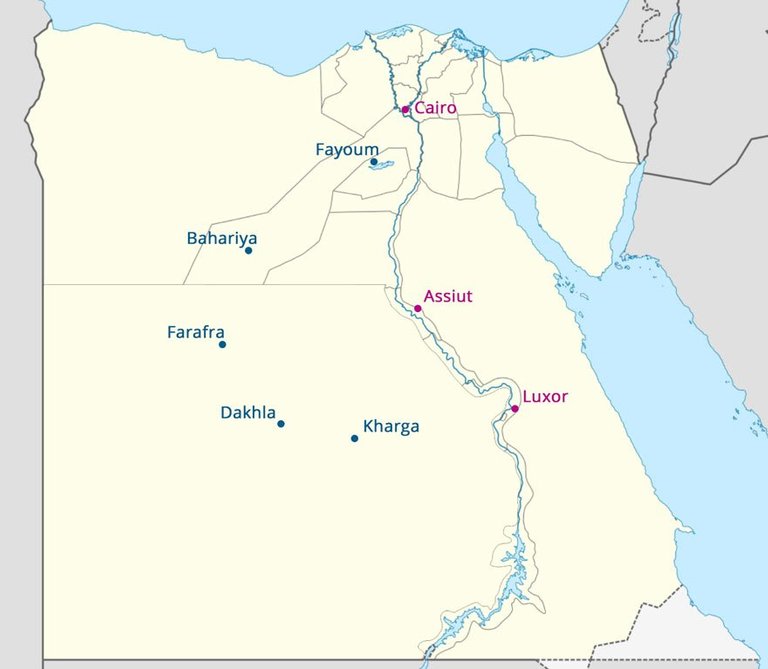
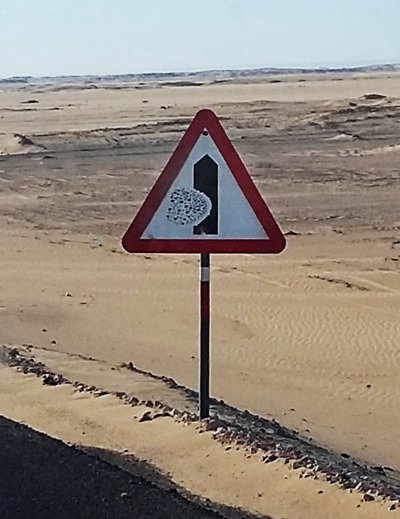
History of Kharga Oasis
There are traces of settlement since the palaeolithic (stone age) with the usual remains of flintstone tools and later then also rock art drawings, for example in Gebel al Tair. In the Pharaonic times of Ancient Egypt, we have also proof of trading activities at central points along certain caravan routes such as the Darb El Arba'īn ("Way of the Forty"), which dates back to the 6th dynasty (the Old Kingdom, around 2347 bis 2216 BCE). This number 40 was mentioned by Herodotus as a road that could be travelled (by camel) in forty days. Important to know is, that these trading points connected Ancient Egypt with Sudan (Ancient Nubia). Her name in pharaonic times was wḥꜢ.t rsy.t = the "Southern Oasis".
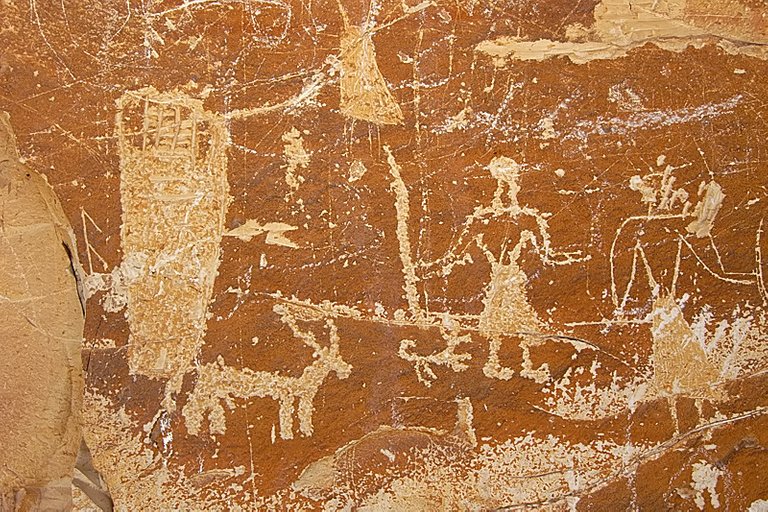
The area around Gebel al Tair was first discovered by John Ball 1898. In the 1940's the Egyptian Archaeologist and Egyptologist Ahmed Fakhry did extensive research on the rock art drawings there.
Climate in Kharga Oasis
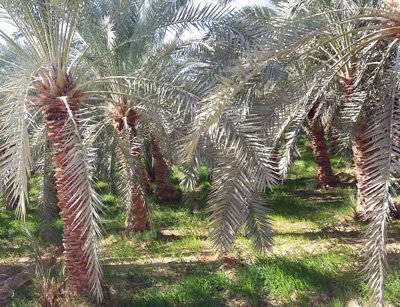
In Roman times the Kharga Oasis was a place for banned Christians and from the 3rd century AD, we can find remains of continuing Christian settlement there such as the Christian Cemetery of Bagawat.
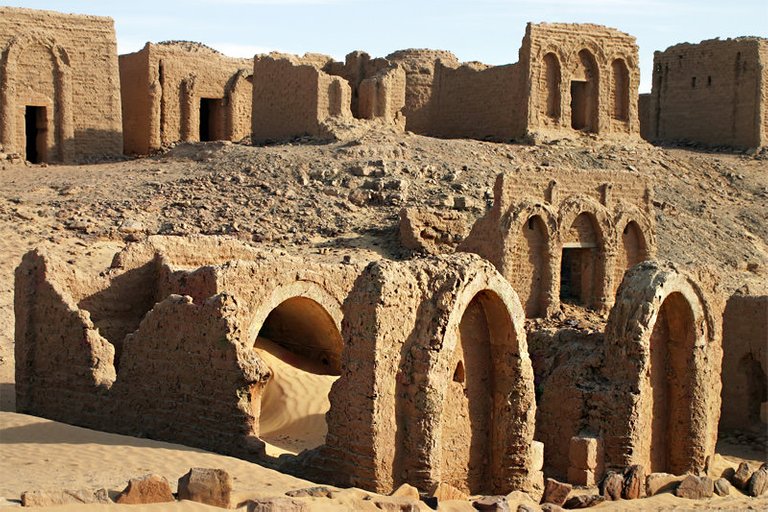
1996 there was a railroad built to connect Kharga with Qena and Luxor, but there is no traffic anymore. As you can see in the picture below the rails are wafted by the sands.
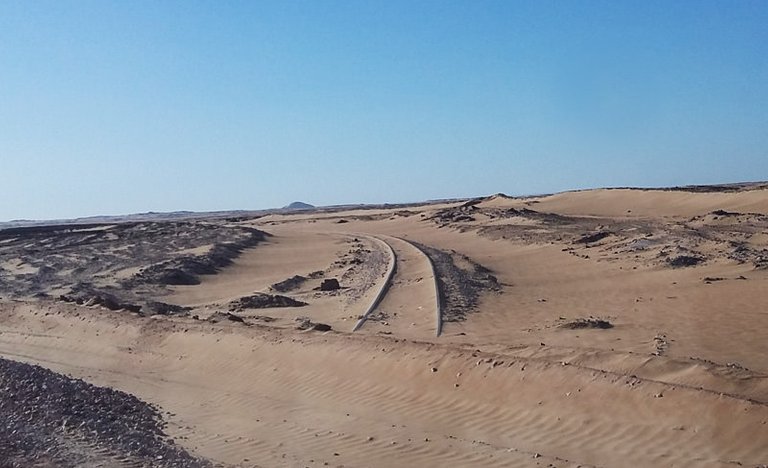
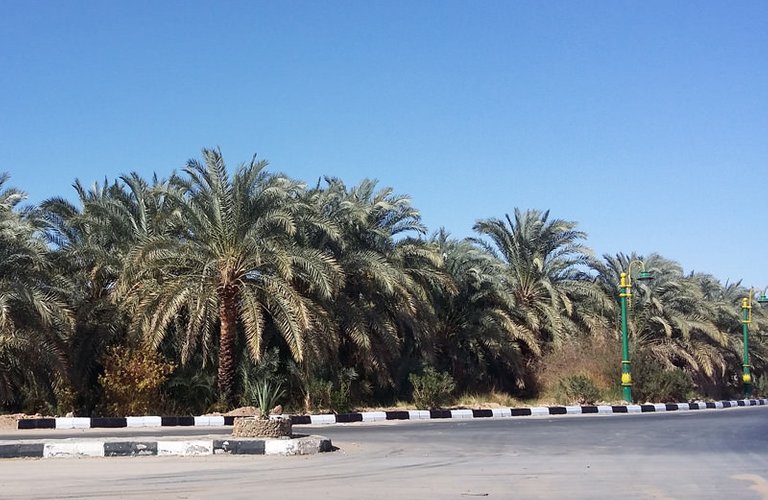
Archaeological Sites
Kharga is famous for many archaeological areas from Ancient Egypt such as the Hibis Temple, Dush Temple, Qaṣr el-Ghuweiṭa (temple of the Theban Triad) and the Bagawat Tombs. About Hibis Temple I am already preparing a special article. But there is more in Kharga to discover. In this post, the Kharga Museum Al Wadi Al Gadid is featured.
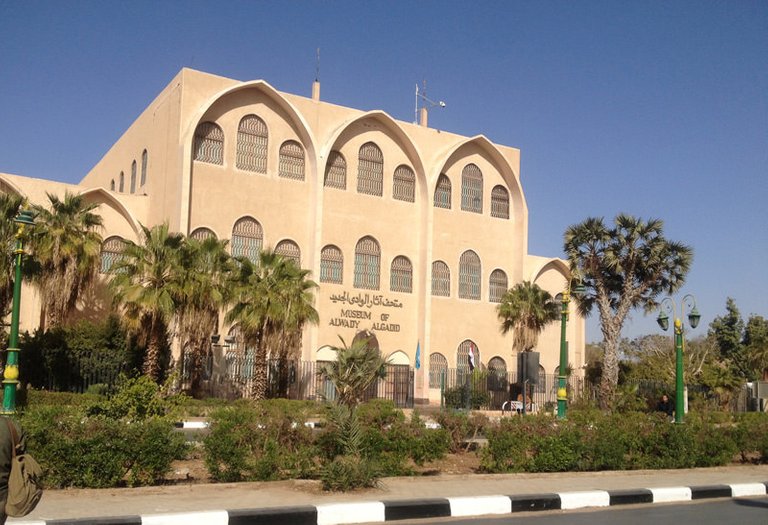
Kharga Museum
The Kharga Museum Al Wadi Al Gadid is a little "pearl" in this oasis. Not very well known but with a huge amount of ancient Egyptian treasures. There are unique objects that can't be found in similar museums. On two floors you can view archaeological artefacts from the early dynastic pharaonic times (first floor) up to the Christian and Islamic period (second floor).
Here are now just a few examples of the displayed objects that are quite impressive.
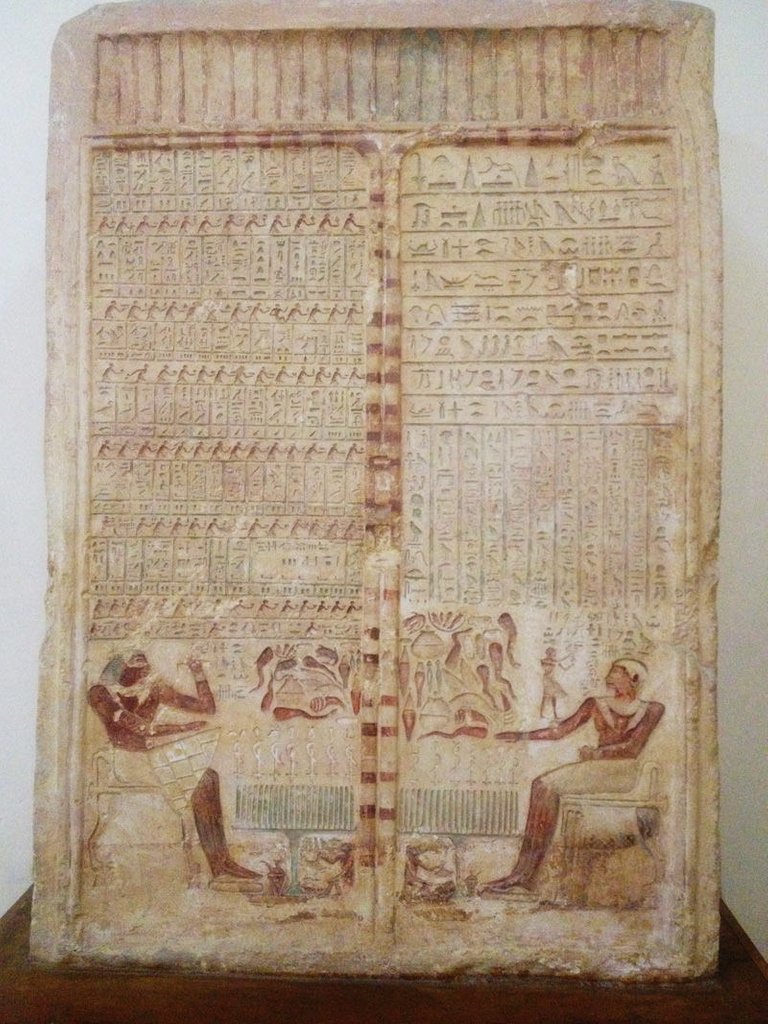
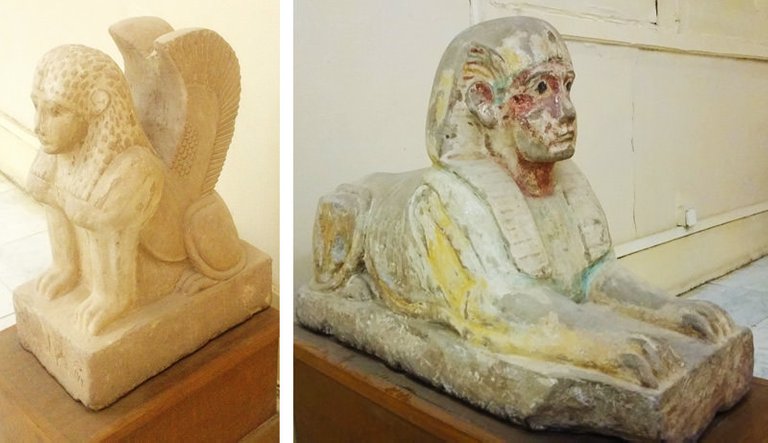
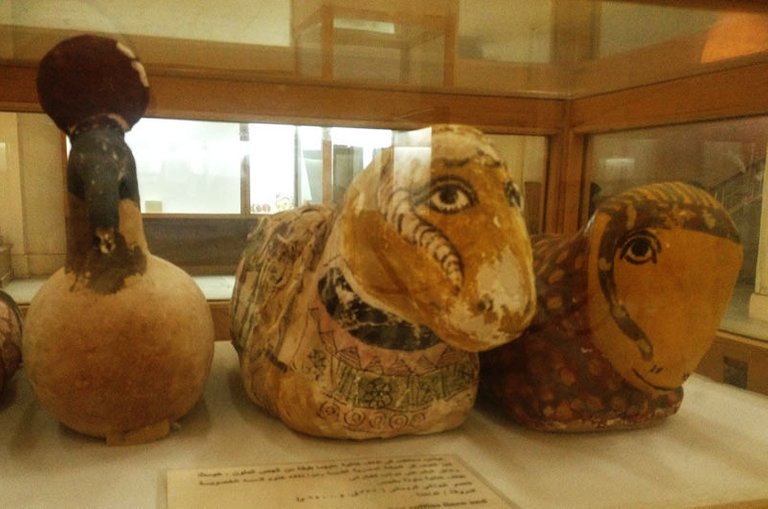

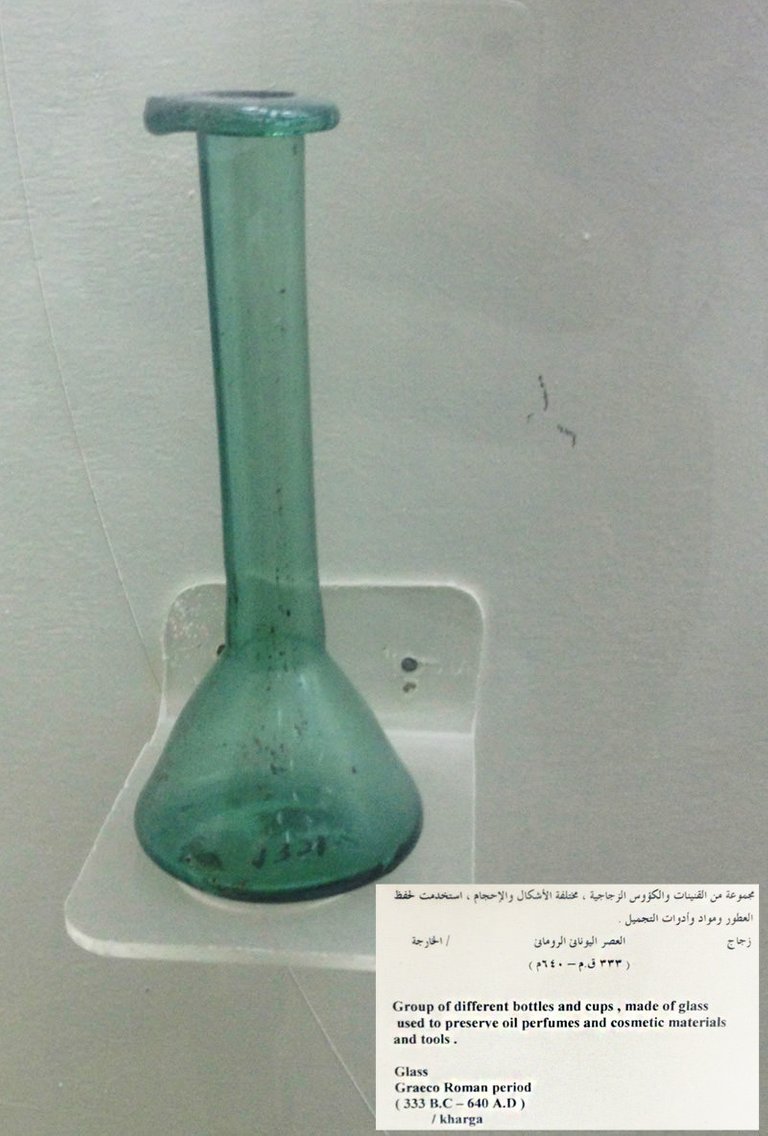
Thank you for reading. If you want to know more about the oases of Egypt, follow me. The upcoming posts will cover the famous Persian Hibis Temple, the Fayoum Oasis and the Temple of Medinet Madi.
Sources and further reading:
• Barich, Barbara E. et al. (eds.), From lake to sand: the archaeology of Farafra Oasis Western Desert, Egypt, Florenz 2014.
• Brugsch, Heinrich, Reise nach der grossen Oase El Khargeh in der libyschen Wüste: Beschreibung ihrer Denkmäler, Leipzig 1878.
• Caton-Thompson, Gertrude, Kharga Oasis in prehistory, London 1952.
• Firth, C.M., The Archaeological Survey of Nubia, Report for 1909–1910, Cairo 1913.
• Ikram, Salima / Rossi, Carolyn, Surveying the North Kharga Oasis, in: KMT: a modern journal of ancient Egypt, 13,4 (2002), pp. 72–79.
• Nicholson, Paul T. / Shaw, Ian, Ancient Egyptian Materials and Technology, Cambridge 2000, pp. 332–
• Wiseman, Marcia F., Kharga Oasis, prehistoric sites, in: Bard, Kathryn A. (ed.): Encyclopedia of the Archaeology of Ancient Egypt, London 1999.
• https://de.wikivoyage.org/wiki/Gebel_eṭ-Ṭeir_(el-Chārga)
Images:
• Image used in the editorial picture: my own photograph, taken 01/2018, depicting a nice little café in the center of Kharga.
• Pict. 1: (edited by the author): CC BY-SA 3.0 Source
• Pict. 3: Source
• Pict. 5: Source
• Pictures 2, 4, 6 –13: my own photographs, taken 01/2018.
Feel free to ask all the question of what you always wanted to know about Ancient Egypt. That’s my job and my passion. Let’s discuss your thoughts and ideas.

If you liked this article, please follow me on my blog @laylahsophia. I am a german Egyptologist writing about ancient and contemporary Egypt, history of science, philosophy and life.
egypt is one of the most ancient countries of the world! There is history everywhere you looking at! Thank you for the post, great work! i appreciate that! :)
Thank you very much. Yes that's true. You just have to go a few steps trough the sand and you find tons of ancient remains.
i live in turkey, i really want to go to egypt, especially for the pyramids.
Egypt is one of the leading country when it comes to ancient history. what a great country the world have
An amazing journey. How much I envy your experiences of traveling to these places. If ever I collected enough to make a pilgrimage to these places myself, I would certainly begin by reviewing your posts at that time. Until then, it's to the grindstone for me. Have a great day and good luck on your next adventure, good friend and sojourner.
Thank you so much for your kind words. I recommend you not to wait to long for that journey. Egypt is really cheap at the moment for traveling. And it is absolutely safe!
I love your sunny pictures! :)
Indeed, the sun, especially the light in Egypt is amazing!
Your articles are very interesting and we need them for learning materials. please permit to resteemit. Thanks a alot @laylajsophia
You are very welcome to resteem as you like. Thank you very much! :)
How has the color preserved for so long? I guess they painted multiple layers through the years, but still. Did they use different colored rocks as a basis? I mean it sure wasn't something organic if it lasted this long.
The colours were mainly produced by special minerals such as ochre (orange, yellow), malachite (green) or lapislazuli (blue). Today we know that most of the temples were completely coloured but almost nothing remained. But these statues were buried under the sand which is the best conservator for the colours.
What a Gem of post ! Amazing pictures and description. I was virtually reached Egypt no doubt. Thanks for sharing.
Very beautiful
Nice post
Congratulations @laylahsophia! You have completed some achievement on Steemit and have been rewarded with new badge(s) :
<p dir="auto"><a href="http://steemitboard.com/@laylahsophia" target="_blank" rel="noreferrer noopener" title="This link will take you away from hive.blog" class="external_link"><img src="https://images.hive.blog/768x0/https://steemitimages.com/70x80/http://steemitboard.com/notifications/votes.png" srcset="https://images.hive.blog/768x0/https://steemitimages.com/70x80/http://steemitboard.com/notifications/votes.png 1x, https://images.hive.blog/1536x0/https://steemitimages.com/70x80/http://steemitboard.com/notifications/votes.png 2x" /> Award for the number of upvotes <p dir="auto">Click on any badge to view your own Board of Honor on SteemitBoard.<br /> For more information about SteemitBoard, click <a href="https://steemit.com/@steemitboard" target="_blank" rel="noreferrer noopener" title="This link will take you away from hive.blog" class="external_link">here <p dir="auto">If you no longer want to receive notifications, reply to this comment with the word <code>STOP <blockquote> <p dir="auto">By upvoting this notification, you can help all Steemit users. Learn how <a href="https://steemit.com/steemitboard/@steemitboard/http-i-cubeupload-com-7ciqeo-png" target="_blank" rel="noreferrer noopener" title="This link will take you away from hive.blog" class="external_link">here!